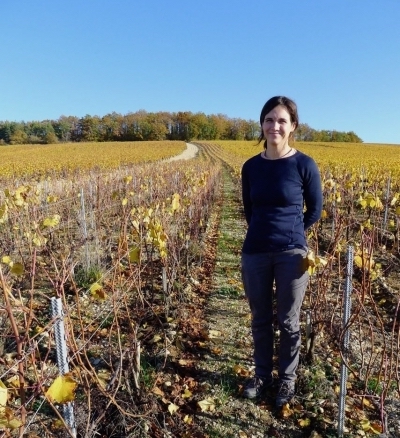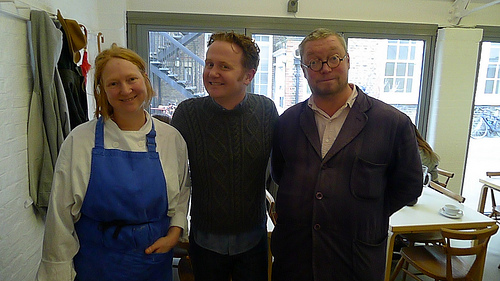The Best of Chablis
Growing grapes in Chablis is not for the faint of heart. A region with long, hard winters and short, hot summers can challenge even the most veteran farmers, especially when a changing climate leads to unpredictable weather patterns. 2021 saw some of the harshest conditions to date: a very early start to the growing season was met with a severe April frost that damaged the vines and brutal weather changes throughout the growing season, resulting in a much smaller harvest and big losses for farmers and winemakers alike. In 2018, the opposite was true with a hot summer with little rain and very ripe fruit, not ideal for makers of the crisp, nervy wines for which Chablis is known. Given these challenges, it’s a very good thing that Corinne and Jean-Pierre Grossot and now their daughter Eve, the 3rd and 4th generations of farmers and winemakers at their family domaine, have an intimate knowledge of their land and how best to care for it.
The Grossots farm 18 hectares of vineyards in the village of Fleys, just east of the town of Chablis on the right bank of the Serein River, considered the best of the appellation. The vineyards are certified organic, which the family believes has led to healthier vines more resistant to pests, disease and water stress in dry years because of deeper roots that can draw water more easily from further down in the soil. Careful pruning provides aeration to stop mildew and keeps yields low. Cover crops are planted between the rows to maintain soil integrity. In such a vigorous environment, grapes are more adaptable to the vagaries of unpredictable weather and mature more consistently with perfect sugar-acid balance for elegant and long-lived Chablis.
In the winery, the Grossots focus on maintaining the unique salty, mineral quality of the Kimmeridgian soil (limestone rich with oyster shell fossils) along with the bright flavours and acidity in the grapes. Fruit is hand-harvested for quality control and then very gently pressed to ensure the fullest extraction of aromatics and flavours. The juice is fermented with indigenous yeasts, very slowly and at very cool temperatures, which ensures more layered and expressive wines. Wines are mostly aged in stainless steel to preserve varietal characteristics and on the fine lees to add texture and complexity and all wines go through malolactic fermentation to enhance mouthfeel and soften the acidity. After bottling the Grossots often don’t release the wines for another two years, believing time in the bottle allows them to fully harmonize.
This is the best of Chablis, from farm to glass, and we are happy to offer it to you!
Domaine Grossot 2018 Chablis ‘Traditionnel’, Chablis
Retail: $44.95 / btl
Click HERE to order!
Domaine Grossot 2018 Chablis 1er Cru ‘Les Fourneaux’, Chablis
Retail: $59.95 / btl
Click HERE to order!
The Wines
 Domaine Grossot 2018 Chablis ‘Traditionnel’, Chablis
Domaine Grossot 2018 Chablis ‘Traditionnel’, Chablis
92 points – Anne Krebiehl MW, Wine Enthusiast
“A hint of flinty reduction shows on this wine’s shy nose, while more swirling reveals touches of lemon and chalk. The palate has freshness and an engaging, chalky texture that plays well with the ripeness of the vintage. Lemon and chalk make for a wine with great typicity.”
Click HERE to order!
Domaine Grossot 2018 Chablis 1er Cru ‘Les Fourneaux’, Chablis
93 points – Neal Martin, Vinous
“The 2018 Chablis Les Fourneaux 1er Cru comes from 30-year-old vines. It has a fragrant nose of Braeburn apples, pear and light wet pavement aromas. The well-balanced palate delivers a fine bead of acidity, good tension, admirable precision and coiled-up energy toward the finish. This is a superb Fourneaux from Grossot.”
Click HERE to order!
About Domaine Grossot
Located on slopes between Chablis and Tonnerre, where the village of Fleys overlooks the 1er Crus ‘Vaucoupin’, ‘Mont de Milieu’ and ‘Les Fourneaux’, Corinne Perchaud & Jean-Pierre Grossot, and their daughter Eve, produce wines with beautiful texture & great minerality reflecting the famous Kimmeridgean soils of the region. Released a year or 2 behind many other growers, these are a classic style of Chablis, and the 1er Cru especially benefit from from a little extra time in bottle.
The 18 hectares of vineyards owned by the Grossot family since the 1920’s are major references of the Chablis region. 13 hectares are AOC Chablis, and 5 hectares are Chablis 1er Cru.
A transition to sustainable, then organic growing methods has been taking place for 20 years. Anticipating certification in 2016, the disastrous vintage conditions in the region necessitated a delay. As of the 2019 vintage, the wines are now certified organic. It is a modern cellar, with sorting table, pneumatic presses. gravity feed, and stainless fermenting tanks. Maturation takes between 9 and 18 months to produce wines with a perfect balance. Oak barrels are judiciously used (30% maximum), to enhance the fruit underlined by the saltiness of the fossilized oysters that make the region famous.
NEW! Order online at TheVineAgency.ca.
You can also email wine@thevineagency.ca or call 416.693.7994. We’d love to chat about wine with you!







